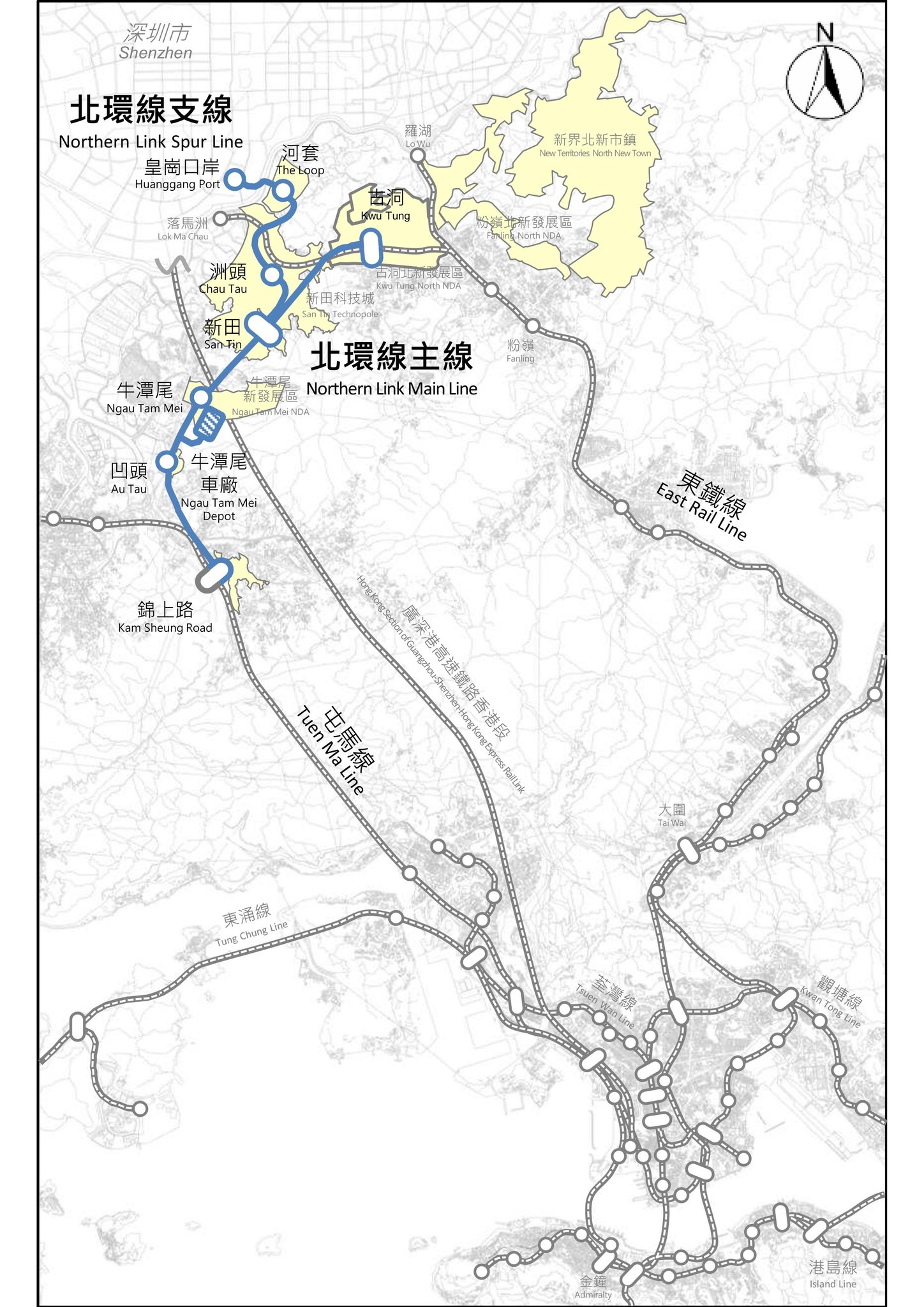
Hong Kong’s Northern Link — a rail line running through the city's new township, the Northern Metropolis (under construction), and linking up with Shenzhen’s Huanggang port — is set to be completed by no later than 2034, two years earlier than was initially planned.
This was revealed during the signing of an agreement between the government and MTR Corp for part one of a two-part deal for the link on Tuesday.
The link, which comprises a 10.7 kilometer-long main line and a 6.2 km-long cross-border spur line, was originally planned for completion between 2036 and 2038. Both lines will open concurrently under the new deal.
"The Northern Link project ‘embodies significant strategic value’", a government spokesman said.
To speed up the project and cut costs, the government has implemented three major breakthrough measures: merging the two lines into a single project while implementing it under a two-part approach; pursuing strategies that include leveraging Chinese mainland approaches in the construction of the cross-boundary part and setting up a dedicated team to speed up the approvals process; and adopting the Chinese mainland’s railway-related construction standards, practices and resources for the spur line.
ALSO READ: Northern Link railway project gets ExCo nod, eyes completion by 2034
According to the agreement, the authorities will grant the MTRC 10 plots of land at Fanling North, Kwu Tung North and San Tin for “rail-plus-property” development, and deduct HK$39.05 billion ($4.97 billion) in land premiums as financial assistance.
The government has verified and approved the estimated cost of HK$31.4 billion for part one of the project.
Immediate construction will begin on key sections, including two sections of the main line— from the Kam Sheung Road Station to the intersection with the approach tunnels to Ngau Tam Mei Depot; and from the San Tin Station to the Kwu Tung Station.
The Transport and Logistics Bureau said in a Facebook post that the Northern Link is a critical infrastructure project for Hong Kong’s future development, serving as the backbone for new growth in the Northern Metropolis and enhancing integration with Shenzhen’s metro network.
Once operational, the travel time between Kam Sheung Road and Kwu Tung will drop from between 60 and 80 minutes to just 12 minutes, significantly improving connectivity and supporting the Northern Metropolis development plan.
READ MORE: HK govt gazettes Northern Link Main Line railway scheme
The cross-border section linking to the new Huanggang Port will seamlessly integrate Hong Kong's and Shenzhen's metro networks, providing residents with a convenient and time-saving travel option and significantly enhancing cross-border connectivity between the two cities.
Yau Kwok-ting, director of the Highways Department, estimated there could be a 20-30 percent reduction in construction costs, partly attributable to the adoption of mainland construction standards, which would enable innovative technologies to be introduced.
He said that using mainland standards for the cross-boundary section of the spur line would not only meet safety requirements but would also prove to be more advanced than international standards.
Chinese mainland standards — covering concrete structures, steel structures, and foundation designs for signaling systems — could also be applied in Hong Kong; however, some adjustments may be needed to accommodate local conditions, such as typhoon resilience, Yau added.
Edward Lau Kwok-fan, member of the Democratic Alliance for the Betterment and Progress of Hong Kong, said he recognizes how advanced Chinese mainland infrastructure is, adding that he supports the use of dual standards for cross-border projects.
Lau also said he would explore optimizing construction scheduling with the MTRC, thereby potentially accelerating completion of key stations, and expressed confidence that the entire Northern Link project, including its spur line, will be completed by 2034 at the latest.
Gary Zhang Xinyu, who chairs the Legislative Council’s Subcommittee on Matters Relating to Railways, said that previous cross-border infrastructure projects faced additional costs and delays because of the differences in standards between Hong Kong and the mainland.
READ MORE: CE: 45 years on, MTR to help fast track Greater Bay Area integration
He said he believes adopting mainland standards for the Northern Link would significantly reduce both construction costs and time, adding that station facilities and operations — including railway signaling systems — will continue to follow Hong Kong standards to maintain consistency with existing rail services.


